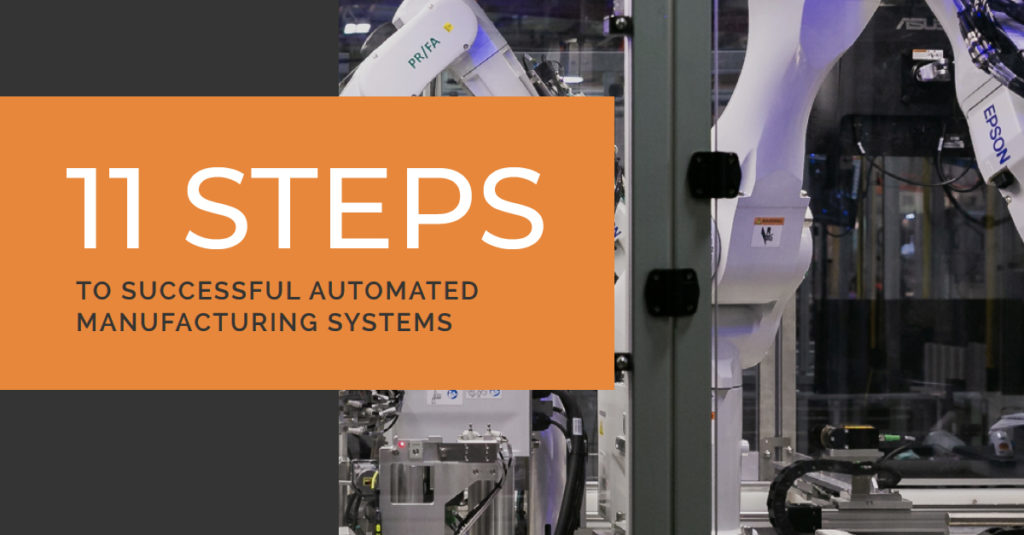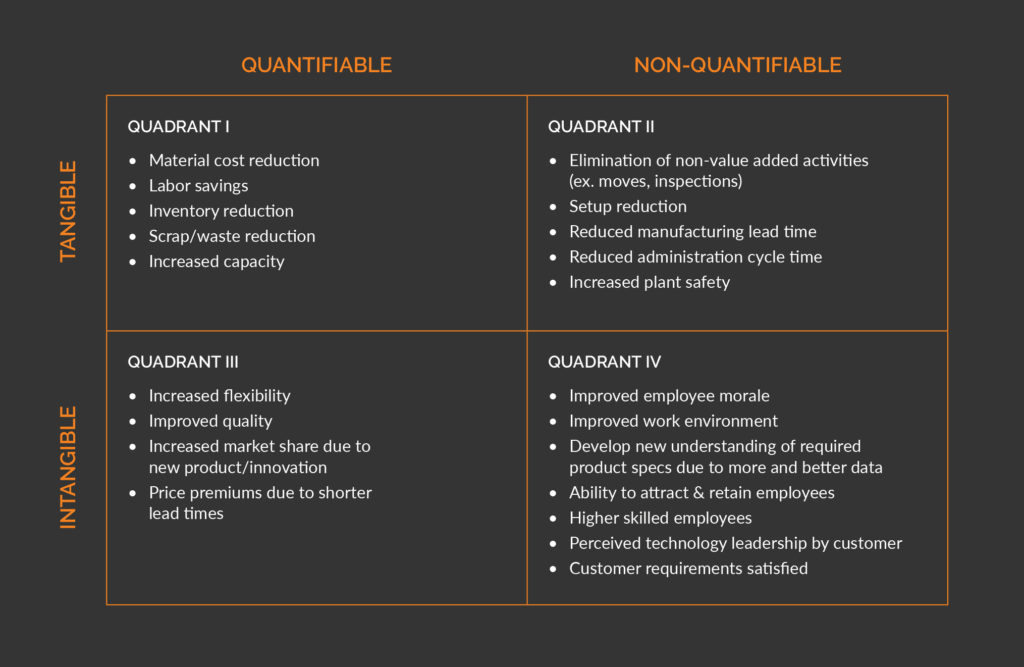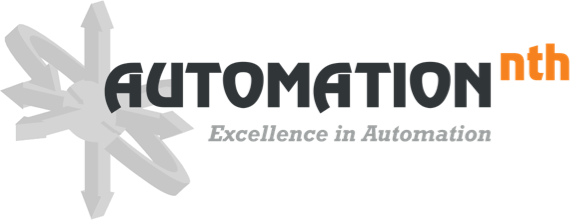Series introduction

Leaders at manufacturers are challenged to maintain an edge in the face of ever-increasing global competition. In order for a manufacturer to become a market leader, they must:
Respond rapidly to changing customer requirements and niche opportunities
Develop new products and take them to the market in as short a time as possible
Implement optimal manufacturing processes to support the company’s strategy
Continuously improve cost structure and product quality
Capitalize on advances in manufacturing technology
Utilize data to generate insights into machine and plant performance
Custom automated systems are a key tool that enable manufacturing leaders to develop a competitive edge. However, the development of custom automated systems also presents unique risks. If managed incorrectly, custom automation can result in unexpected costs, quality issues, and delays in bringing new products to market. This 11 part series will present guidelines that will enhance manufacturers’ chances for economic and technical success with custom automated systems. It will walk you through proven processes, from start to finish, to assist you in successfully incorporating automated manufacturing systems designed to meet your unique needs.
This series was inspired by a report published by a now-defunct organization called the “Custom Automated Systems Group” (CASG). As part of the CASG report, production supervisors or managers at more than 15 manufacturing companies, each with extensive experience in using custom automated manufacturing systems in their own operations, shared their suggestions, perspectives, and some warnings. They shared their experiences so others could be more effective in implementing automation technology. Their edited comments are included throughout this series.
We will post one step each week over the next 11 weeks:
When to Automate
To get all 11 steps together in an ebook, fill out the form below and we’ll send it to you!
Step 1: When to automate
Before investing in automation, a manufacturer should meet the following three prerequisites:
- Automation is aligned with the company's long-term Business objectives
The company’s manufacturing strategy should be established with a clear vision for how automation will provide value and support the strategy.
- The company is willing to invest in automation for the long term
and support it appropriately
The skills required to support automated equipment are quite different from those needed for manual production. The manufacturer must be committed to developing an organization of engineers, operators, and maintenance personnel that can support automated equipment. If the manufacturer is unwilling to train and develop automation support staff, they should consider putting the equipment at a Contract Manufacturer that has automation experience and appropriate personnel.
- There is a clear need for automation
Typically manufacturers choose to automate their production for one of the following reasons:
- Product cannot be made manually (i.e. quality requirements, etc.)
- Need more production than is currently available
- Need higher quality with greater consistency in the manufacturing process
- Reduce costs
- Reduce the time to “go to market” and scale up
- Need to accommodate timely production changes
- Improve safety and ergonomics of production processes
Financial Justification
After these prerequisites are met, the manufacturer needs to determine the financial impact of investing in automation. Custom automation typically requires a large commitment of money and resources. To justify the expense, manufacturers commonly evaluate the cost of automation versus the cost of their next best alternative.
However, cost justification alone is not adequate. Automation impacts more than just the quantifiable aspects of a manufacturers’ total business. If done correctly, automation can be a strategic weapon to attain leadership in the global economy.
It may be difficult to assign a hard value to automation’s strategic value to a manufacturer. To illustrate, the quadrants below classify the various benefits of automation by whether they are tangible or quantifiable. Manufacturers commonly only include items in Quadrant I in their financial analysis of automation. However, excluding intangibles and non-quantifiable benefits results in no value being assigned at all. Intangible and non-quantifiable benefits can have a huge impact and must be considered when evaluating automation investments. Manufacturers that properly value intangibles may gain a competitive advantage over those that only consider Quadrant I.
Manufacturers should also ensure they consider all financial aspects of automation into their analysis including ongoing maintenance, spare parts, operator training and skill levels, taxes, any applicable R&D tax credit, and BARDA or similar government support programs.

When Not to Automate
It’s also important for a manufacturer to clearly understand when it’s NOT appropriate to automate their production.
Too Early to Automate
It is too early to automate if the process to manufacture the product is not well understood. This most frequently occurs with new products. Simultaneous process development and automation development will result in more changes and costs than if the process was well defined first.
However, it is still appropriate to engage an automation architect early on for input on manufacturability and to discuss requirements. Then when the processes become well defined, the automation can be developed more quickly and with less risk.
Too late to automate
When automation is introduced too late in the product lifecycle, the machine’s depreciation cannot be spread over as many units, potentially making the return on investment too low.
Perspectives on Automation
“The benefits that can be obtained from automation investment are not well understood. Many CEOs and other members of general management have financial, legal, or marketing backgrounds and may not fully understand the implications of automation. The financial people who are often responsible for analyzing capital investments often do not fully understand the implications either. Those with manufacturing or engineering backgrounds, who might be more likely to understand and favorably receive automation projects, are often perceived as having self-serving interests. The result of these divergent viewpoints is that intangible benefits, the least understood, are often ignored in many evaluations, viewed as standard boilerplate depending on the nature of the investment, or held suspect.”
Electrical and electronics products producer
“The ability to respond to changes in high-volume business, and to produce a continued high quality level of product, at a certain cost target, drives automation in our business. If we were to do these operations manually, we would not be assured of constant quality, no matter how skilled our workers are – at best, human performance varies, even though in small increments. Thus, the assurance of quality has a high value to us, justifying the investment. The same is true for assured production and cost levels.”
Electrical and electronics products producer
“Flexibility must be included as part of financial analysis for automation. Flexibility reduces product design and changeover time for new products and lower incremental facilities and tooling investment for mid-cycle changes and future programs. First, the benefit of flexibility should be quantified if it will reduce expenditures for the next cycle and derivative products. Second, for product changeover, flexibility reduces downtime and generates incremental sales due to additional capacity. Third, flexibility generates incremental sales through responsiveness to swings in market demand.”
From an in-house publication at a major automobile company
